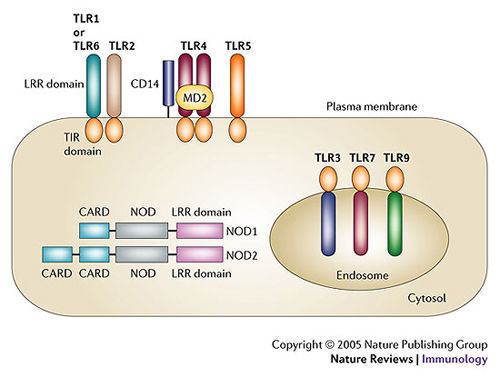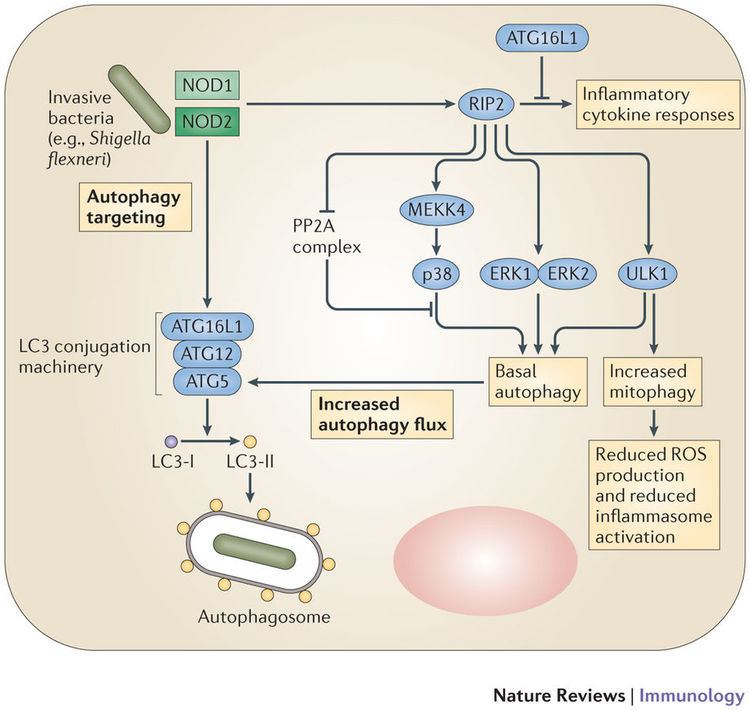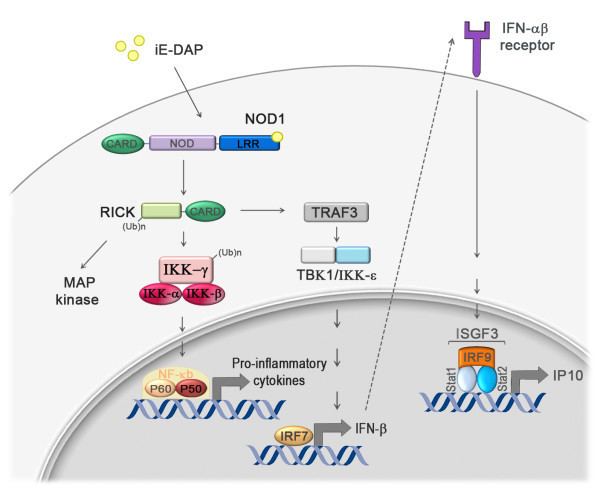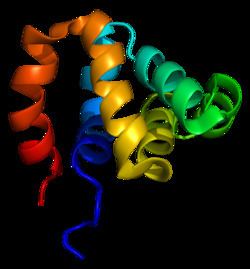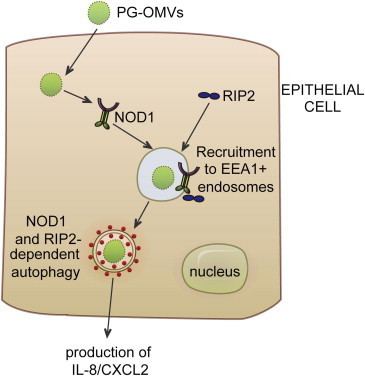Entrez 10392 | Ensembl ENSG00000106100 | |
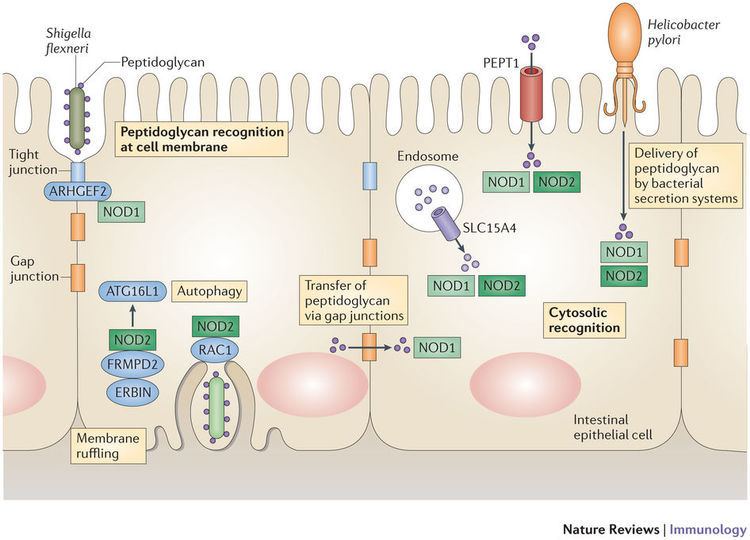 | ||
Aliases NOD1, CARD4, CLR7.1, NLRC1, nucleotide binding oligomerization domain containing 1 External IDs MGI: 1341839 HomoloGene: 4440 GeneCards: NOD1 | ||
Nucleotide-binding oligomerization domain-containing protein 1 is a protein receptor that in humans is encoded by the NOD1 gene. It recognizes bacterial molecules and stimulates an immune reaction.

NOD1 protein contains a caspase recruitment domain (CARD). NOD1 is a member of NOD-like receptor protein family and is a close relative of NOD2. NOD1 is an intracellular pattern recognition receptor, which is similar in structure to resistant proteins of plants, and mediates innate and acquired immunity by recognizing bacterial molecules containing D-glutamyl-meso-diaminopimelic acid (iE-DAP) moiety. Nod1 interacts with RIPK2 through the CARDs of both molecules (See the structure of the NOD1 CARD in the right panel). Stimulation of NOD1 by iE-DAP containing molecules results in activation of the transcription factor NF-κB.
